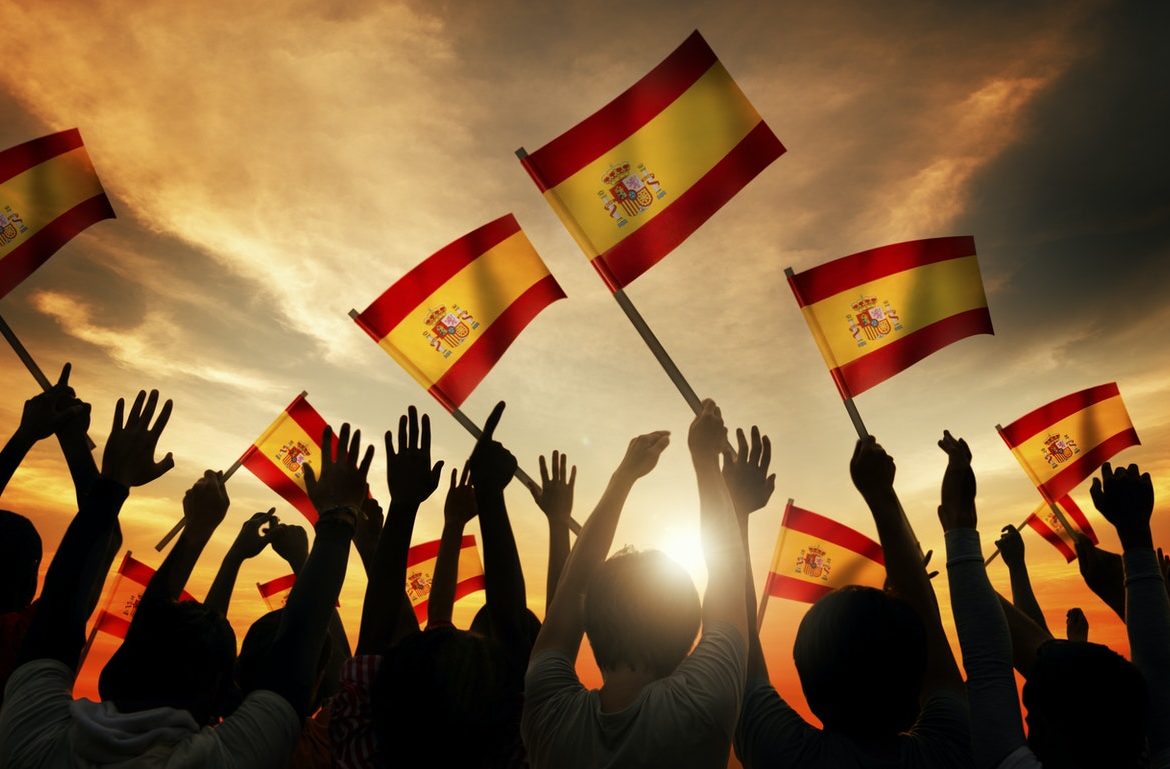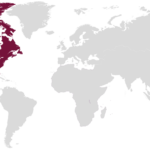Spain is one of the biggest economies in Europe. The country’s market is large, but therefore the competition is fierce. Consumers have a lot of choices when it comes to products in the stationery shops and online. Despite the love of its culture and native products, Spain has many global items available in stores.
But what about Spanish ecommerce? Does it have big potential? How about cross-border shopping? What should you know before entering this market?
You will find all the answers to these and other questions below.
Spanish ecommerce overview
Spanish ecommerce is buzzing with activity. In 2025, it’s projected to generate a whopping $51,124.8 billion in revenue, marking a 12% increase from the previous year. This positions Spain as the 13th largest e-commerce market globally, just ahead of Australia. Looking ahead, the market is expected to maintain a compound annual growth rate (CAGR) of 8.8% from 2025 to 2029, potentially reaching $71.7 billion by 2029.
The number of online shoppers in Spain is on the rise. Back in 2022, there were about 32 million e-commerce users, accounting for 68% of the population. By 2025, this figure is expected to jump by 25%, bringing the total to 40 million users. That’s many people clicking “add to cart,” don’t you think?
Spaniards have diverse tastes when it comes to online shopping. Some of the most popular categories include:
- Technology: Gadgets and electronics are always in demand. According to ECDB, they account for 24.1% of the revenue.
- Leisure and culture: Think of concert tickets, books, and more.
- Fashion: According to Statista, clothing and shoes are the hottest sellers, with 52% and 38% of consumers choosing them respectively.
- Furniture and homeware: This sector has experienced growth too, driven by increased consumer interest in enhancing living spaces.
- Care products: Healthcare and items for personal care reflect a growing consumer focus on wellness and self-care.
- Travel: Many book their trips and accommodations online.
- Food: Ordering meals and groceries online has become commonplace.
- DIY: The do-it-yourself market has expanded as more consumers undertake home improvement projects.
But what devices are the top ones when it comes to online shopping? Nothing other than computers and smartphones – the second ones becoming more and more popular. A significant portion of online purchases are made via mobile devices – 66% of respondents said they use them for online purchases. This is the global shift towards m-commerce.
And what about the top online sellers? While global giants like Amazon have a strong presence, local businesses are also thriving. Platforms like El Corte Ingles, PC Components, or Carrefour Spain hit the top of the list. They not only support local craftsmanship but also offer shoppers unique items. Have you ever bought something handmade online?
Consumer behavior in Spain
Spanish consumers are increasingly shifting their shopping habits online, with 49% reporting an increase in online purchases compared to the previous year.
This trend is primarily fueled by convenience, better prices, and a wider product variety – 59% say online shopping is simply more convenient, while 47% appreciate the discounts and offers available. Thus, the Spaniards can undoubtedly be called a consumer society. Price is one of the main purchasing factors. Easy payments, promotions, and customer service also have a great influence here.
However, despite this digital growth, trust remains a key concern. The number of Spaniards who distrust online payment security has doubled, signaling a major challenge for retailers.
Another interesting trend is the growing preference for local products: 48% of Spanish shoppers prioritize locally made goods, valuing quality, durability, and fair labor conditions.
Technology is deeply embedded in the routines of Spanish consumers. With a significant portion of the population engaging in online activities, digital platforms have become central to shopping, communication, and entertainment. And it isn’t surprising that artificial intelligence is in demand. Approximately 40% of Spanish consumers rely on AI-driven recommendations, indicating a shift toward personalized and efficient shopping journeys. Businesses leveraging AI to offer tailored experiences are better positioned to meet these evolving expectations.
Yet, economic fluctuations have made Spanish consumers more cautious with their spending. Only 11% plan to increase their overall expenditure in the next 12 months, while 28% aim to save more. The numbers underscore a heightened price sensitivity and a focus on value, prompting consumers to seek quality products at reasonable prices.
Also, when it comes to gathering product information, 73% of consumers research online before making a purchase. They show the need for transparent, well-detailed product descriptions and reliable customer reviews. Email remains the most preferred channel for receiving updates (54%), but most consumers prefer to limit notifications to once a month, suggesting brands need to be mindful of overcommunication.
Payment methods in Spain
The payment market in Spain is projected to rise with a CAGR of 9.60% between 2025 and 2030.
While cash has historically been the dominant payment method, its usage is gradually declining. A 2024 study by the Bank of Spain revealed that 57% of Spaniards still use cash daily, and 59% called it a usual payment method. It’s still a decrease compared to a year ago. Card payments are the second most popular payment option. 31% of respondents said they use it daily.
Mobile payments and digital wallets are on the rise. They are becoming increasingly popular, especially among younger consumers. Services like Adyen, PayPal, and StripeWallet are gaining traction. Additionally, global payment providers such as Apple Pay and Google Pay are gaining users, contributing to the diversification of payment methods.
The Buy Now, Pay Later (BNPL) model is also gaining momentum in Spain. The BNPL market is expected to grow by 11.6% annually, reaching approximately $8.91 billion in 2025. This growth is driven by consumers seeking flexible payment options that allow for immediate purchases without immediate financial burden.
Payment safety
The shift into digital has brought heightened concerns regarding payment security. Notably, the Spanish Data Protection Agency (AEPD) imposed a €5 million fine on GENERALI ESPAÑA for GDPR breaches following a data breach, underscoring the critical importance of robust security measures. To bolster consumer trust, Spain has implemented stringent authentication protocols, aligning with the EU’s regulatory framework aimed at ensuring safer and faster digital payments. And as digital payments continue to rise, addressing security challenges remains… well, a top priority for financial institutions and consumers alike.
Social media in Spain
In 2025, social media will be an integral part of daily life in Spain more than ever, reflecting both global trends and unique local preferences. The country boasted 39.7 million social media users in January 2025, accounting for about 82.9% of the population.
And what are the reasons behind using social media? 48.7% of Spanish users rely on social platforms to keep in touch with family and friends, while 46.1% use them to pass the time. Interestingly, 22.1% actively search for products, and 21.1% engage with content from their favorite brands. This highlights how social platforms influence shopping behaviors. With news consumption at 41.4%, brands have a golden opportunity to blend information with engagement.
Facebook maintains a dominant position, with 35.9 million users, representing 74.7% of Spain’s population. The platform’s user base is diverse, but there’s a notable concentration among individuals aged 25 to 34, comprising 22% of users. Interestingly, while Facebook leads in overall numbers, its growth has plateaued, and younger demographics gravitate toward other platforms.
Instagram has grown substantially, attracting more than 27.08 million users, which is 56.4% of the Spanish populace. The platform is particularly popular among younger users, with those aged 18 to 24 making up 24.4% of its user base. The numbers underscore Instagram’s appeal to a younger audience seeking visual and interactive content.
Messenger remains the most utilized messaging app, with 21,388,500 internet users in Spain engaging with the platform. Its widespread adoption highlights the cultural emphasis on instant communication and community connectivity.
The influencer economy in Spain has experienced remarkable growth in social media. Reports indicate a 40% increase in business volume related to influencers compared to 2023, with the community of influencers growing by 21%, reaching 207,000 creators with more than 10,000 followers. Thus, we can see how big is the role influencers play in shaping consumer behavior.
Logistics in Spain
Spain’s logistics map’s main points are Madrid, Barcelona, Alicante, Bilbao, and Valencia. Logistic companies in this country provide, among others:
- logistics & supply chains,
- logistics management,
- 3rd party logistics services,
- freight forwarding,
- packaging,
- warehousing,
- storage and distribution,
- corporate logistics,
- and pallet trucks.
In 2025, the Spanish freight and logistics market is valued at approximately $74.38 billion and is projected to reach $87.62 billion by 2030. It will grow at a compound annual growth rate (CAGR) of 3.33%. And, of course, the growth is fueled by the burgeoning Spanish ecommerce sector, which is expected to expand by 5.4% in 2025, leading to a 2.8% increase in employment within the logistics industry.
The cold chain logistics segment is experiencing rapid growth, with the market size estimated to reach $9.33 billion by 2029, reflecting a CAGR of 10.47%. The surge is attributed to the rising demand for temperature-sensitive products and the expansion of warehousing facilities across Spain.
The industrial and logistics sector has seen substantial investment, with €235 million invested in the second quarter of 2024, marking a 30% increase compared to 2023. Throughout 2024, over one million square meters of logistics space were contracted, a 10% rise from the previous year, indicating robust demand and expansion in infrastructure.
Regional initiatives, such as the establishment of the Andalucía Logistics Cluster in Córdoba, aim to position the region as a logistics hub in Southern Europe. This cluster focuses on innovation and knowledge to develop a sustainable and resilient logistics ecosystem.
Moreover, geopolitical events have influenced logistics operations. For instance, instability in the Red Sea led to a 6% increase in goods movement through Spanish ports in 2024, as companies sought alternative routes to avoid conflict zones.
To wrap up
Spanish ecommerce is undoubtedly on the rise. If you plan to enter this market, remember the consumer preferences and market conditions presented above. With increasing user numbers, diverse product offerings, and innovative trends on the horizon, the future looks bright. So, next time you shop online, think about the dynamic ecosystem making it all possible.
We keep our fingers crossed for your business, and if you want to find out more about other countries, here are some samples – pieces of content about Benelux and France. But there are more!
***



